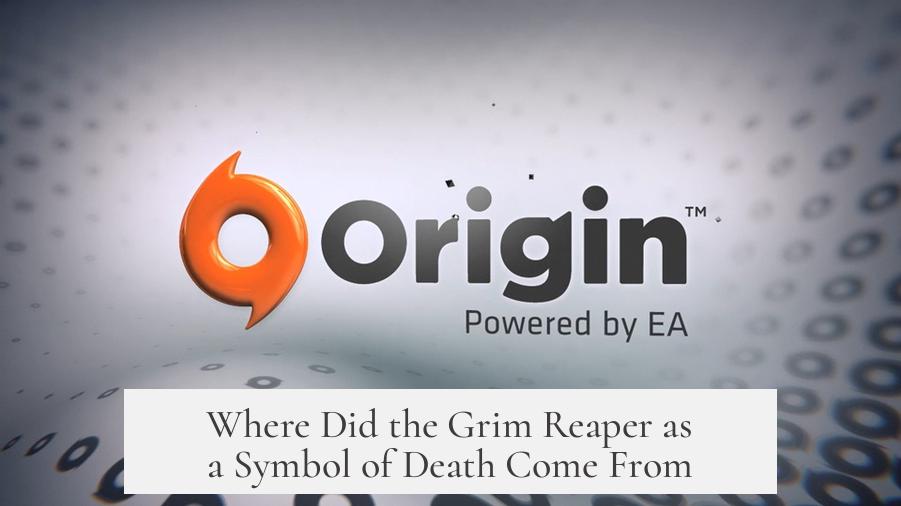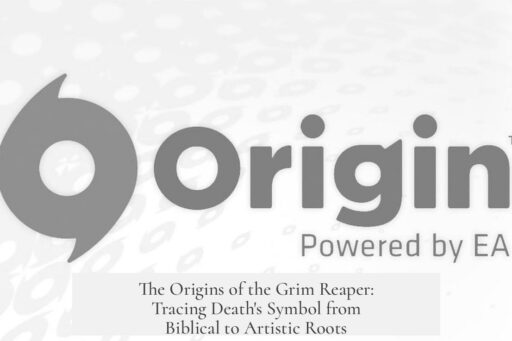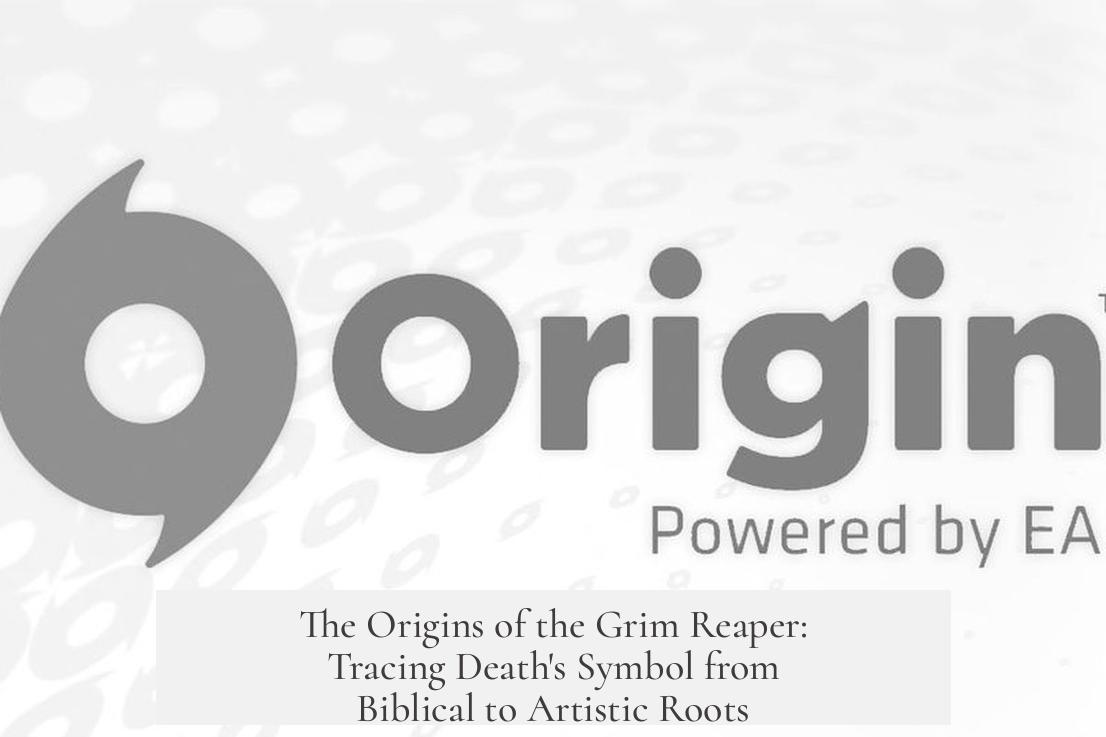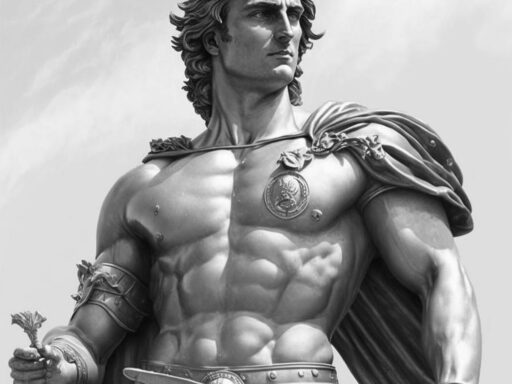The Grim Reaper as a symbol of death originates from a mixture of biblical, ancient mythological, and medieval influences. Its modern image most directly stems from the Biblical figure known as the Rider of the Pale Horse, one of the Four Horsemen of the Apocalypse. Although the Bible does not detail Death’s appearance, later artistic depictions portray him as a skeleton cloaked in black robes carrying a scythe, a tool associated with harvesting life’s end.
This symbol did not arise in isolation. Before Christianity, many cultures personified death. Christianity borrowed elements from earlier traditions, blending them into its own imagery. For example, the Greek god Thanatos, who personified death and was depicted in black carrying a sword, contributes to the Grim Reaper’s characteristics. Likewise, the Titan Cronus, who wielded a sickle or scythe as a symbol of time’s passage, influenced the Reaper’s signature tool.
The Middle Ages deepened this imagery with the rise of the Danse Macabre. This artistic motif appeared during the Black Death pandemic and featured dancing skeletons, emphasizing death’s inevitability and universality. The pandemic’s devastation made the skeleton a potent reminder of mortality, pushing the skeleton figure to the forefront of death symbolism.
Earlier Roman culture contributed through the concept of memento mori, artistic reminders of the inevitability of death, such as mosaics from Pompeii. These reinforced the cultural acceptance of death as a natural end and encouraged reflection on life’s mortality.
| Source | Contribution to Grim Reaper Symbol |
|---|---|
| Bible (Four Horsemen of the Apocalypse) | Death as the Rider of Pale Horse, black robes, figure of inevitability |
| Greek Mythology (Thanatos) | Personification of death, black clothing, carrying a weapon |
| Greek Titan Cronus | Sickle/scythe symbolizing time and life’s end |
| Medieval Europe (Danse Macabre, Black Death) | Skeleton imagery, artistic spreading of death personification |
| Roman Culture (Memento Mori) | Reminder of mortality, acceptance of death |
The scythe, carried by the Grim Reaper, likely symbolizes the harvesting of souls at death, borrowed from Cronus’s sickle. Skeleton imagery became prominent during the 14th century due to the Black Death’s impact on European art and collective consciousness. Over time, these diverse elements fused, creating the Grim Reaper recognized today.
- The Grim Reaper is a blend of biblical, Greek, and Roman symbolism.
- Its iconic skeleton form grew from medieval European art amid the Black Death.
- The scythe represents the cutting down of life’s time, linked to Cronus.
- Earlier cultures like the Romans and Greeks shaped death personification themes.
Where Did the Grim Reaper as a Symbol of Death Come From?

The grim reaper, that eerie figure cloaked in black with a skeletal grin and a scythe, stems from a fascinating blend of religious, mythological, and historical sources. But where exactly does this iconic symbol originate? Let’s peel back the layers of history and cultural cross-pollination to find out.
Most people picture the grim reaper as a skeleton in a dark robe, wielding a scythe, silently collecting souls. You’ve probably seen movies, Halloween costumes, or even cartoons featuring this character. Yet, this spooky icon is not just a product of modern imagination.
Biblical Roots: The Rider of the Pale Horse
The idea that inspired much of the grim reaper’s imagery comes from the Bible’s Book of Revelation. Here, one of the Four Horsemen of the Apocalypse rides a pale horse—he’s explicitly named Death.
Curiously, the Bible doesn’t describe Death’s looks in detail. No skeleton or scary robe mentioned. So, where did that imagery come from?
Artistic depictions over the centuries took creative license. Poland and the Baltic states were among the first to show Death grasping a scythe, symbolizing the harvesting of souls much like harvesting crops. They dressed him in a dark cloak to emphasize mystery and finality.
Older Religious Influences: Death Before Christianity
Christianity didn’t invent the idea of personified Death—it borrowed heavily from earlier beliefs. Across a vast expanse of cultures, Death often existed as a character. From ancient myths to tribal lore, Death appeared as a guide, a ferryman, or a judge.
This helps explain why many different cultures today have similar depictions of death. It might be a skeletal figure for one, an animal for another, or a shadowy form in yet another. Christianity picked up those existing ideas, blended them, and the Grim Reaper as we know it began to take shape.
Artistic Traditions: The Danse Macabre and the Black Death

The grim reaper’s skeleton form really gained traction during the Middle Ages, particularly amid the horrors of the Black Death in the 14th century. Europe was devastated by plague, and death became an everyday reality impossible to ignore.
The Danse Macabre, or the Dance of Death, became a popular motif. It portrayed skeletons merrily dancing with the living. The message? Death comes for everyone, no exceptions.
This imagery, masterfully described by historian Barbara Tuchman in Distant Mirror, made the skeletal personification of Death a widespread and chilling visual, reinforcing the grim reaper iconography.
Mythological Mix: Greek Thanatos and Titan Cronus
Now, here’s a twist: the grim reaper isn’t just from Christian or medieval art. It’s essentially a mashup of Greek myth and Roman symbolism.
- Thanatos, the Greek god of death, was often shown wearing black and carrying a sword. Euripides’ Alcestis (438 BCE) describes him fittingly.
- Thanatos sometimes had wings, hinting at the biblical angel of death concept.
- The scythe, an iconic tool of the reaper, comes from Cronus—the Titan who ruled time and wielded a sickle or scythe.
- We can think of the scythe as a metaphor for “cutting” a life short when a person’s allotted time runs out.
The skeleton image, however, most likely emerged later, with the grim realities and artwork inspired by plague and mortality awareness in the Middle Ages.
Roman Influence: Memento Mori and Death’s Reminder
Romans didn’t dress Death as a hooded skeleton, but their memento mori artifacts were a gripping reminder of death’s inevitability. These often featured skulls or skeleton-like images designed to remind people to live wisely.
For example, mosaics from Pompeii depict this somber message: no one escapes mortality. Such artworks underscore that the cultural conversation about death is ancient, wide-ranging, and deeply human.
So, What’s the Takeaway?

The grim reaper is not a random invention. It’s a cultural collage merging biblical allegory, Greek myth, Roman symbols, and medieval artistic interpretations fueled by epidemic despair.
Death’s image serves a purpose beyond scare tactics. It offers a visual focus for our fears, our acceptance, and ultimately, our understanding of mortality. The reaper’s scythe reminds us that time is limited. The black robe and skeleton confront us with the stark reality beneath our skin.
Practical Reflections
Next time you see a grim reaper in a movie or Halloween costume, remember this: it’s a symbol centuries in the making, shaped by human culture’s need to grapple with death’s certainty.
For artists, writers, and creators, understanding this lineage can inspire more nuanced portrayals of death, rather than just cheap thrills or jump scares.
Ask yourself: How does the grim reaper reflect your culture’s view on death? What symbols do you find most impactful? Is the image comforting, frightening, or something else entirely?
Final Thoughts
In a way, the grim reaper connects us through time and belief. From the pale horse in Revelation to Euripides’ winged Thanatos, to the choreographed macabre dances of plague-ridden Europe, all these strands intertwine into that unmistakable figure we know today.
Death has many faces, but the reaper is definitely the one who wields the scythe of history itself.




